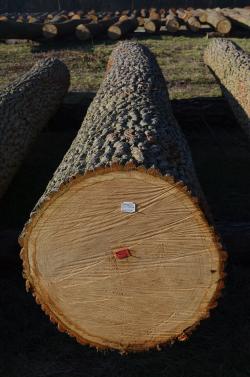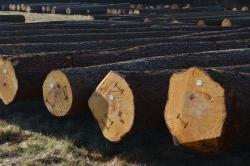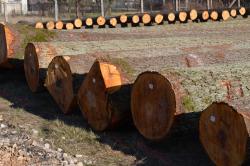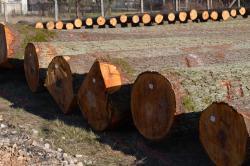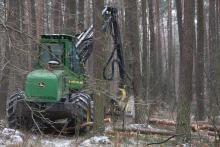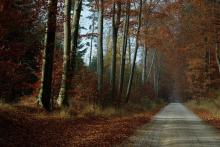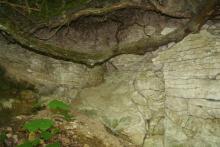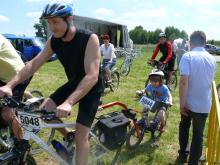 Asset Publisher
Asset Publisher
Polish forests
Poland is in the European lead, while concerning the area of all forests. They cover about 29,2 % of the country territory, and grow within the area of 9,1 million hectares. The overwhelming majority of the forests is state owned, of which almost 7,6 million hectares are managed by the State Forests National Forest Holding..
The number of Polish forest is still growing. The forestation rate of the country has increased from 21 % in 1945 to 29,2 % at the moment. Between 1995 and 2008, the forest area increased by 310 thousand ha. The basis for afforestation works is the "National Programme for Increasing the Forest Cover" (KPZL), assuming an increase of the forestation rate up to 30 % by 2020 and up to 33 % by 2050. Polish forests abound in flora, fauna and fungi. 65 % of the total number of animal species live there.
The forests grow in our country on poor soils, mainly because of the development of the agriculture in previous years. It influences the distribution of the types of the forest sites in Poland. Over 55 % of the forest areas is covered with coniferous forests. In other areas, there are forest sites, mainly the mixed ones. Their small part constitute alder and riparian forests – not more than 3 %.
In the years 1945 – 2011 the area of natural deciduous tree stands within the area of the State Forests National Forest Holding increased from 13 to 28,2 %.
Within the lowlands and uplands the most often occurring tee species is pine. It covers 64,3 % of the forest area of the State Forests National Forest Holding and 57,7 % of private and commune forests. In the mountains the predominant species is European spruce ( in the west) and European spruce with beech (in the east). Domination of pine is the result of carrying on sustainable forest management in the past. Once, the monocultures (crops or cultivations of one species) were the answer to the great demand of industry for wood. Such forests appeared to be quite fragile to climatic factors. They also were often the prey of pests' expansion.
In Polish forests, the share of other tree species, especially deciduous trees have been systematically increasing. The foresters have stepped aside from monocultures – that is why, they try to fit specific species of the forest stand to the natural stand, that would be proper for the given area. Thanks to that, in the years 1945 – 2011, the area of the deciduous tree stands within the lands of the State Forests National Forest Holding increased from 13 to 28,2 %. There occur more and more frequently the following tree species: oaks, ashes, maples, sycamore maples, elms, but also birches, beeches, alders, poplars, hornbeams, aspens, tilias and willows.
Our forests are the most often represented by the forest stands aged 40 to 80 years. The average age of the forest equals 60 years. More and more trees are of big size at the age over 80 years. Since the end of the Second World War, the forests' area has increased up to almost 1,85 million hectares.
Raport o stanie lasów w Polsce 2012
 Asset Publisher
Asset Publisher
NAJCENNIEJSZE DREWNO SPRZEDANE
NAJCENNIEJSZE DREWNO SPRZEDANE
Blisko 530 m3 najlepszego drewna ze świętokrzyskich i radomskich lasów zostało sprzedane na II Regionalnej Submisji Drewna Cennego RDLP w Radomiu.
Submisję rozstrzygnięto 25 listopada w Nadleśnictwie Włoszczowa, gdzie znajdował się plac, na którym zgromadzono drewno. Oferty złożyło 13 podmiotów zajmujących się produkcją okleiny, forniru oraz drzwi i ekskluzywnych mebli. 10 z nich kupiło drewno liściaste, w tym dębowe, olchowe, bukowe oraz drewno iglaste – modrzewiowe i sosnowe.
Podobnie jak w poprzednim roku największym powodzeniem cieszył się surowiec dębowy poszukiwany przez firmy zajmujące się produkcją wysokiej jakości oklein. Zainteresowane były nim nie tylko firmy z Polski, ale też z Estonii. Rekordowy los (sztuka) pochodził z lasów Nadleśnictwa Ostrowiec Świętokrzyski, za metr sześcienny zapłacono aż 3 408 zł. Natomiast blisko 13 tys. zł zaoferowano za sztukę dębu o masie 4,73 m3 z Nadleśnictwa Jędrzejów (2 738 za m3). Drewno dębowe w dobrej cenie sprzedano także z pozostałych nadleśnictw: Kielce, Staszów, Grójec, Przysucha i Radom. Łącznie z losami z Nadleśnictwa Ostrowiec Świętokrzyski i Jędrzejów sprzedano 158 m3 tego surowca. Średnia cena za metr sześcienny wyniosła 2 453 zł.
Najwięcej sprzedano olchy – aż 188 m3, głównie pochodzącej Nadleśnictwa Włoszczowa, które było pionierem na terenie radomskiej dyrekcji w sprzedaży drewna w formule submisji. Olcha ta odznacza się unikalnym rysunkiem i barwą, rzadko spotykanymi w innych regionach kraju. Ze względu na te cechy jest poszukiwana przez producentów oklein. Najwyższą cenę zaoferowano jednak za los z Nadleśnictwa Ruda Maleniecka, tj. 1 102 zł za m3.
Modrzew wystawiły nadleśnictwa Suchedniów, Przysucha i Jędrzejów. Najwyższą cenę zaproponowano za los z lasów przysuskich – 1 034 zł za m3. Najcenniejsza sosna pochodziła z lasów Nadleśnictwa Ostrowiec Świętokrzyski – została sprzedana za cenę 1 111 zł za m3.
Średnia cena sprzedaży wszystkich gatunków była wyższa niż uzyskana w trakcie pierwszej regionalnej submisji i wyniosła 1 162 zł za m3.
Doświadczenia submisji są pozytywne – radomskich leśników cieszy to, że potrafią wyprodukować drewno o ponadprzeciętnych cechach użytkowych docenianych przez producentów z branży drzewnej. Tym bardziej, że jest to produkt ekologiczny i odnawialny powstający z poszanowaniem zasad zrównoważonego rozwoju i przepisów prawa, co potwierdzają certyfikaty FSC® i PEFC. Drewno to budzi zainteresowanie nie tylko odbiorów, ale i leśników – jest to doskonała sposobność do szkoleń brakarzy.
Tym samym RDLP w Radomiu na stałe wpisuje się w kalendarium submisji w LP.


 fot. Paweł Fabijański
fot. Paweł Fabijański
 fot. Paweł Fabijański
fot. Paweł Fabijański
 fot. Paweł Fabijański
fot. Paweł Fabijański





